![https://adoptostaging.blob.core.windows.net/article/qFg5oC2Ak0CKlLpMOUajlQ.png]()
So why do you need a mobile-first recruitment strategy?
But let’s back up a bit. Why do you need a mobile-first recruitment strategy in the first place? I mentioned some benefits in the introduction. So let’s cover some of these considerations in a bit more detail.
1. Get more qualified applicants
Mobile recruiting can speed up the hiring process. Mobile recruitment allows applicants to find jobs through their mobile and quickly fill out the application form. Simplifying the application process for mobile involves making it easy to fill out any job-related questions and upload relevant documents.

Source: infojiniconsulting
By simplifying the application process, you will get more qualified applicants for your position. In addition, by enabling applicants to complete pre-employment tests for the job on mobile, you can do initial screening to find the best candidates.
Yet, mobile hiring is not limited to the initial stages of the recruitment process. A mobile-first recruitment policy can be rolled out across the whole hiring process.
For example, you can conduct video interviews via mobile. Video interviews are a great form of secondary screening. You can conduct video interviews before the final round of face-to-face interviews.
Did you know that SMS has open rates around 98%, compared to just 20% of all emails?
With TalentLyft, you can choose whether you want to call your candidates via AirCall, send them an SMS or engage through Whatsapp or Viber and engage with them in a more relevant way.
See how it works 2. Better informed applicants
One of the biggest frustrations for job applicants is the lack of transparency in the hiring process. It’s all too common to submit an application and never hear anything back from the recruiting company. More frustrating, you might do an interview and never hear back from the company unless you follow up.
As a recruiter, you can provide clear feedback to candidates through a mobile-first recruitment strategy. For example, if you run your application process through an online app, you can automatically:
Notify candidates of any positive updates to their application
Schedule interviews without having to send emails
Inform candidates who were not rejected
As you can see, a mobile-first recruitment strategy can improve communication and candidate engagement. Candidates can be made aware of any updates to their application, thanks to mobile app push notifications.
Candidates and recruiters may also use mobile channels for communication. This can help improve communication and coordination between recruiters and candidates.
Create a reliable hiring plan with a free hiring plan template
Enter your desired headcount and yearly hiring budget and receive a detailed hiring plan by departments per year! Download template and optimize your hiring, today!
Download template 3. It helps you tap into a larger market
It's safe to say that millennials and mobile phones go hand in hand. Mobile recruitment strategies are the best way to help you reach a young market.
Past research has found that around 79% of people use social channels when hunting for a job. People tend to apply for jobs if they see an advert while browsing through their social media feeds.
Mobile and social media are undoubtedly linked, making it pivotal for recruiters to invest time and money into effective mobile-first recruitment strategies. A nice example of a company that took notice and then acted on these trends is McDonald’s.
McDonald’s utilized mobile-first social media channels like Snapchat to promote job openings with Snaplications. Using snapcodes, people could apply for jobs at McDonald’s through the platform in just 10 seconds.
The company initially launched the Snaplications campaign in Australia. In the first 24 hours, the campaign generated 3,000 applications, four times higher than the traditional marketing channels.
McDonald’s then launched the campaign globally. Again, there was a positive response across most markets.
Using social media to promote jobs and simplify the application process worked for McDonald’s. It’s a good strategy for jobs with a low barrier to entry.
The campaign had additional benefits. For example, in the initial Australian campaign, the recruitment drive reached an estimated 304 million people and was picked up by the press across multiple continents.
If you build your brand using social media, you'll reap positive results.
How to launch a mobile-first recruitment strategy
We’ve touched on some of the benefits of a mobile-first recruitment strategy. Next, let’s talk about how to launch a mobile-first recruitment campaign for your business.
1. Conduct initial research
The starting point for a mobile-first recruitment strategy is to define your goals and develop an appropriate strategy that fits the needs of your business. That is a key variable. What works for your business won’t necessarily work for another firm.
You should try to answer the following questions:
How many applicants do you get from the various channels you use?
How can you optimize the channel experience for mobile?
Which additional channels could you try that might help secure more applicants?
With each hiring channel, test the application process on mobile. For example, if one of your primary recruitment channels is your website, you could use a tool like Google's Mobile-Friendly Test Tool to see how your site appears on a mobile screen.
Mobile friendliness also ties into SEO which can further support your recruitment efforts.
If your site is mobile-friendly, great! On the other hand, if it's not, you'll be given suggestions for how to make improvements.
You should conduct research like this across all of your hiring channels. Your analysis and the answer to those two questions posed above will help you frame your recruitment strategy.
2. Perform competitor analysis
Once you’ve reviewed your hiring practices, you should conduct competitor analysis to review what other businesses in your industry are doing. First, make a list of your biggest competitors and research what marketing channels they are using.
You should:
This process of reviewing the approach taken by your competitors should provide you with plenty of useful insights for your recruitment strategies. You can utilize these insights to improve your approach to hiring.
3. Develop your hiring strategy
The insights you’ve gleaned from an analysis of your hiring practices, combined with a review of competitors, will underpin your hiring strategy. You now need to use that information to develop a plan of action that will enable you to get more qualified candidates per job opening.
You will have a lot of suggestions for things you can do to improve your mobile-first recruitment strategy. It’s vital to rank and prioritize these suggestions.
One way you can do this is to give each suggestion a numerical score from 0-5 using metrics like effort and impact to rank the various suggestions. The table below provides a nice illustration of how that system works.
Source: Medium
For example, you might decide that you want to develop a mobile app for managing applications. After all, your competitors all have an application. Creating a web application is complex and costly. The effort for this would be high. The presumed impact of a new app is medium.
Ranking suggestions in this way helps you prioritize where to invest your efforts.
Naturally, you want to invest your initial efforts in strategies with a high impact and low effort. Ideas that will take a lot of effort to implement and have a low impact will be at the bottom of your “to-do” list.
4. Monitor the results
Devising a new hiring strategy is generally quite a fun endeavor. You get to come up with ideas and unleash your creativity. A bit like the folk at McDonald’s did when they came up with their Snaplications campaign.
Once you have your plan, you need to set a baseline for assessing success. One of the best ways to do this is to set SMART goals for your mobile-first hiring strategy.
SMART stands for Specific, Measurable, Attainable, Relevant, and Time-Based. A good example of a SMART goal for a mobile-first hiring strategy might be something like:
That would be your overarching goal. You’d then need to set specific SMART goals for each of the actions you will take. For example, through advertising job openings on TikTok, you might want to “generate 50 job applications per month.”
Setting an overarching goal and specific task-related goals will help you assess the success of your recruitment efforts. You can utilize this data when reviewing what’s working and where you are having problems.
Bottom Line
It's vital to keep up with the changing times and be open to other recruitment methods. Mobile-friendly recruitment is a strategy that reflects the increasing amount of time that people spend on mobile and the importance of mobile as a marketing and hiring channel.
This article covered the benefits of a mobile-first recruitment strategy. You learned that mobile recruitment is a great way to increase applicants per position, inform candidates how the hiring process is progressing, and tap into a larger pool of recruits.
After outlining the benefits of mobile recruitment, you learned how to launch a mobile recruitment strategy. Start by reviewing your hiring practices and conducting a competitor analysis. The insights you gain through these two things will help you to devise a strategy. Once you implement your plan, make sure to track success.
Once you've implemented your strategy you might want to check our blog post Text Your Way to The Best Candidate Experience and start texting your candidates today!
Bio
David Pagotto is the Founder and Managing Director of SIXGUN, a digital marketing agency based in Melbourne. He has been involved in digital marketing for over 10 years, helping organizations get more customers, more reach, and more impact.









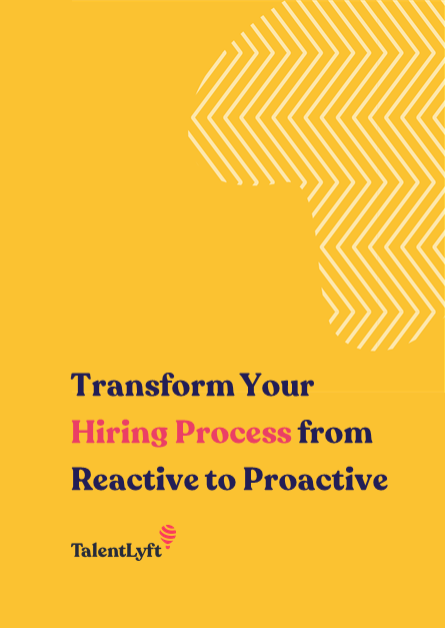
![Boolean Search for Recruiters [Actionable Guide]](https://adoptoprod.blob.core.windows.net/article/7wyu_xAg806Tm_lmFg71Rw.png)








